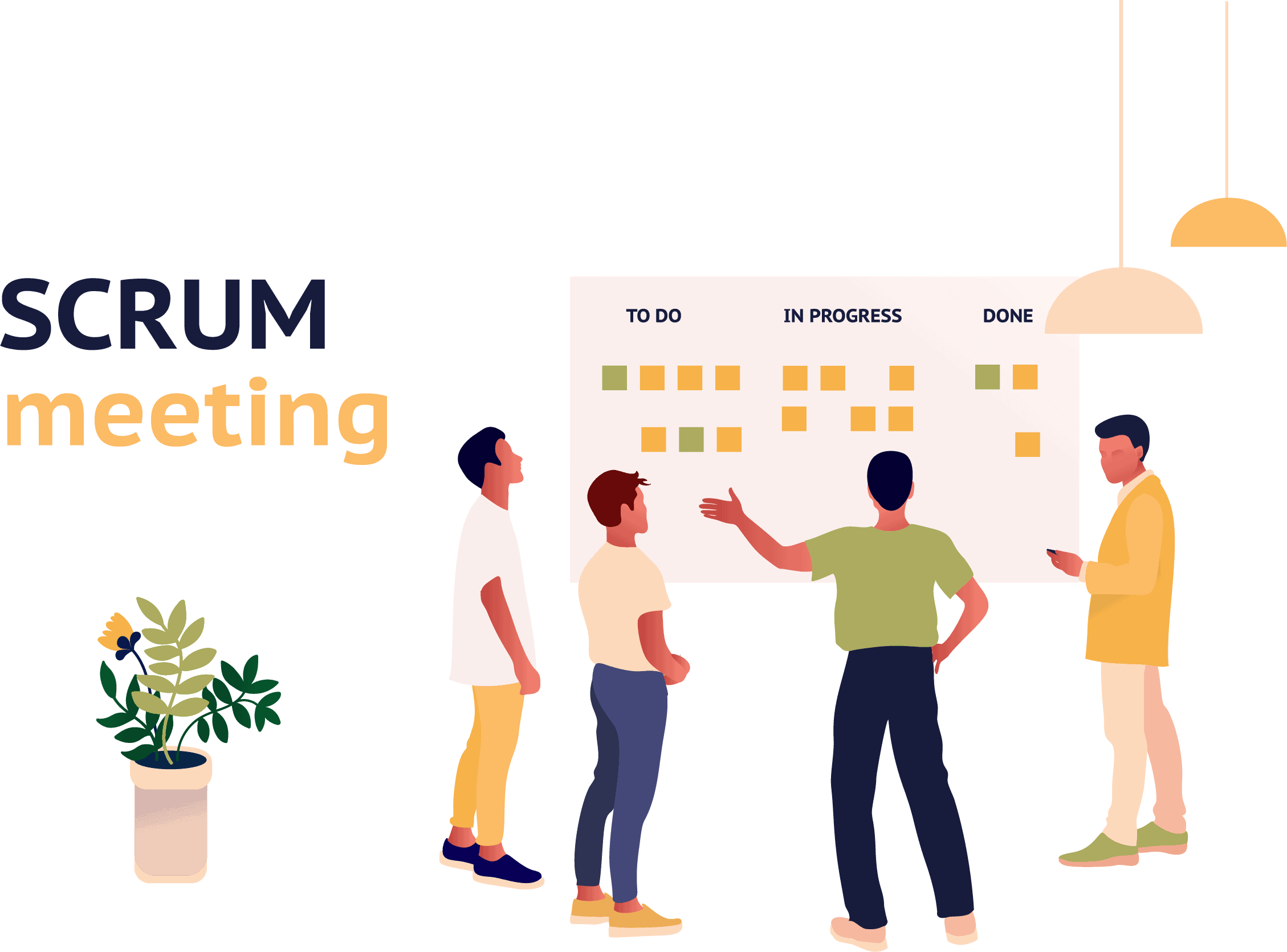Scrum has four meetings in the process. These meetings have a fixed rhythm. They take place at the same times of the day or week. This fixed rhythm ensures that everyone in the team knows where he or she stands. It therefore costs little energy once it has become a habit. How long the meetings last and when they take place differs per assignment. An assignment in Scrum is split into time periods that are always the same length: sprints. Each sprint consists of four meetings: the sprint planning, the stand-up (daily scrum), the sprint review and the sprint retrospective. It is important that you keep a close eye on the time at each meeting. You determine in advance how much time you will take with the team for an activity. You must adhere to this. This ensures focus. In this blog we explain all meetings.
The sprint planning
Before a sprint begins, the team schedules a time to work on the sprint. This happens during the sprint planning. This is a detailed short-term schedule. It consists of compiling the sprint backlog, drawing up the acceptance criteria and estimating the time required. The product backlog contains all the wishes and requirements for a product or project. Based on priority and value, the product owner agrees with the development team during the sprint planning what the sprint goal is for the coming period. The development team determines how much work they take on. The work moves from the product backlog to the sprint backlog. The team then determines the acceptance criteria for each item to be delivered. For each item, it is described what must be done for an acceptable result. What requirements must the result meet? By describing this you avoid noise and it contributes to unambiguous expectations. In sprint planning, it is also common for the development team to estimate how much time is needed per task on the sprint backlog.
The stand up
During a meeting of no more than 15 minutes, the team will discuss progress, possible bottlenecks and whether the sprint goal has been achieved in a stand-up. Everyone remains standing during this meeting and briefly tells about the status of the tasks. The following questions are often answered:
- What have you achieved for your team?
- What will you achieve for your team?
- Are there any obstacles in the web towards achieving the sprint goal?
Answers to these questions provide insight into the status of the progress and the possibility to adjust as a team. There is no room for long discussions during the stand-up. It is accessible and transparent to everyone.
The sprint review
In the sprint review, the team members present the result of the sprint. It is intended to collect feedback from customers and stakeholders. You also include them in the progress. The product owner represents the customer during the sprints, but not during the review at the end of the sprint. Then the customer makes himself heard. The customer feedback is used to adjust the priorities on the product backlog.
The sprint retrospective
The sprint retrospective is the team evaluation of the process. The team concludes the sprint with the retrospective. The meeting is used to learn from the previous sprint and to perform even better in the next sprint. The retrospective is about the process. The team discusses what went well and what could be improved. The goal is to achieve even better results and to get even more fun at work. The results of the retrospective must be converted into concrete actions that are taken up in the next sprint. Translate these into actions for the next sprint and put them on the scrum board. You can make a scrum board digital, for example with the architecture software from https://bizzdesign.com/.
I believe in creativity and try to express the same with my words. I enjoy writing and keeping myself in touch with the books.

Hello sir,
what is sponsored post price in this site https://techlurk.com/
waiting your reply
Thanks
Sorry for the late reply. Please email us at contact@may15media.com